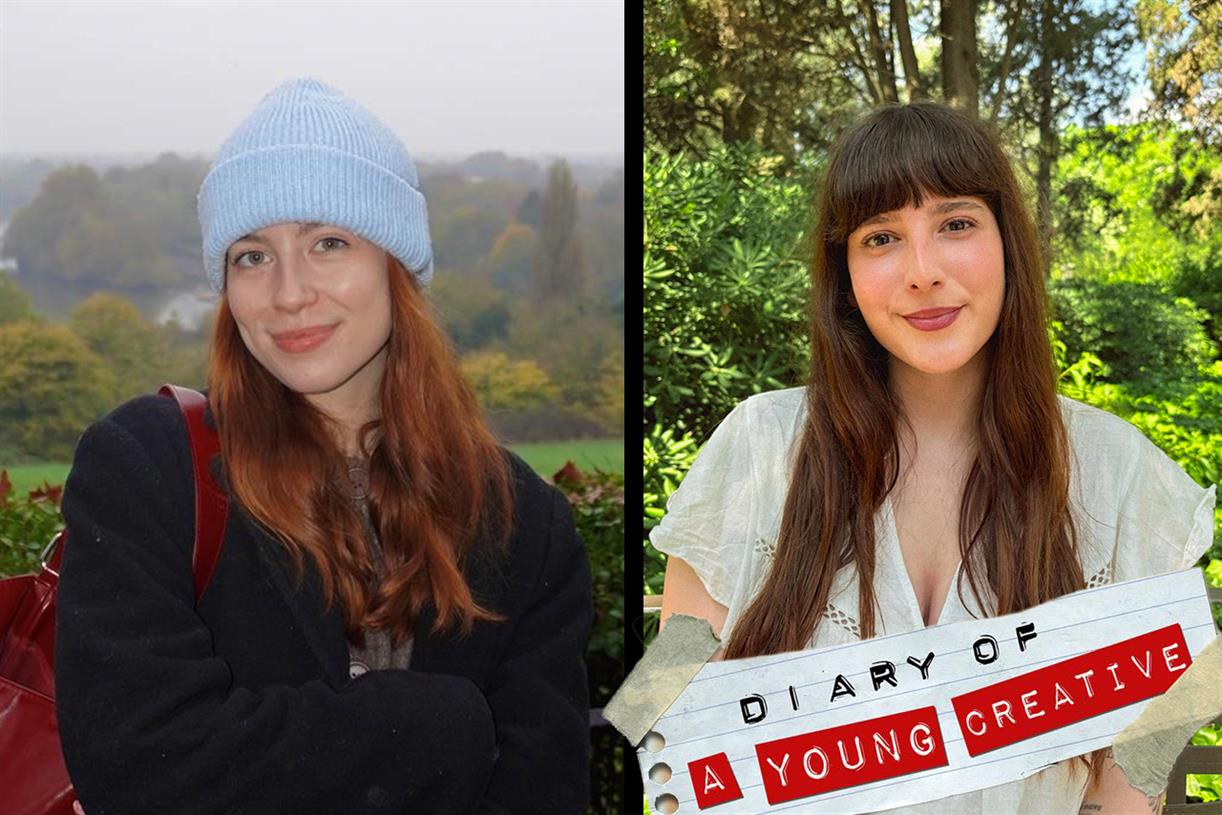Tin Man: photography using an old-fashioned tintype process
Joseph Wyman Brown uses tintype photography to make modern photos. The cameras he uses to make tintypes are slightly bigger than the one he’s holding. | Photo by Mitchell Clark / The VergeJoseph Wyman Brown captures modern people with...

Almost all of the photographs on Joseph Wyman Brown’s website are of faces, people staring directly out of the frame in a way that is at once striking and slightly unsettling. He makes his photos using wet plate tintype, a process that hasn’t been widely used for nearly a century, and which produces contrast and detail not found in today’s digital photography — at least not without significant retouching. The photographer’s involvement in the artistic process of tintype is obvious: look closely around the ragged edges of each image and you can literally see his fingerprints etched into the emulsion.
:no_upscale()/cdn.vox-cdn.com/uploads/chorus_asset/file/23296883/img20220307_00342064.jpg) Brown with the main camera he uses to take tintypes — taken with 35mm film.Photo by Mitchell Clark / The Verge
Brown with the main camera he uses to take tintypes — taken with 35mm film.Photo by Mitchell Clark / The Verge
“The biggest thing with wet plate is they have to stare,” Brown said in an interview with The Verge. “You are present for at least a minute with me.” The process creates an intimacy between photographer and subject that simply doesn’t exist when taking photos with a digital camera or a phone, because there isn’t enough time. But for Brown, the laborious and time-consuming process of making a tintype is one of the things that makes the art form so special.
Where a digital camera requires the photographer to slot in a battery and an SD card, creating a tintype picture involves dipping a metal plate into chemicals, loading it into a camera, and then using different chemicals to develop an image onto the plate. And, like the Civil War-era photographers who traveled around in covered wagons making tintype images, Brown makes his way from town to town and sets up his mobile studio at breweries, coffee shops, and other venues, where people can come to have their pictures taken — though he travels in a Ford E-350 van instead of a horse-drawn buggy. We caught up with him on a recent stop in Tennessee.
:no_upscale()/cdn.vox-cdn.com/uploads/chorus_asset/file/23295993/mclark_220228_5066_0010.jpg) Brown’s van, parked on a street in Memphis.Photo by Mitchell Clark / The Verge
Brown’s van, parked on a street in Memphis.Photo by Mitchell Clark / The Verge
In the age of near-instant photo sharing, it might seem odd that people will line up and go through the 10- to 12-minute process to have a tintype made. While Brown says he’s “not really doing anything different than they did 160-plus years ago,” his way of working wouldn’t be particularly familiar to most photographers today.
The sense of artistry is evident when you see one of the pictures in person. Even as someone who’s shot plenty of Polaroids and rolls of film, holding a piece of metal with an image captured on it and permanently lacquered into place is almost shocking. Looking at the metal plate, I saw what the camera was seeing at that exact moment in time. That effect was even stronger when Brown brought out some of the 19th-century tintypes that he’d collected — it was a window into a world that now only exists in history books.
Any photographer can take a few minutes to get to know the person they’re shooting, and Brown does. “It’s amazing the amount of trust it’s built in 20 seconds. Someone walks in front of the camera and they’re like, ‘So this is only one shot, right?’ And, yeah, that’s it. Let’s make something awesome.” Slow photography like tintype requires unbroken attention for what can seem like an eternity in the age of instant gratification.
There are upsides and downsides to Brown’s approach, and the time and focus that his process requires. One of his subjects received devastating news while he was taking a portrait of her and her husband. They wanted to take a picture afterward, and he said that in the resulting tintype, where they sat in their grief for several minutes while facing a camera. “You can tell in their eyes that they were robbed of something.”
But on the flip side, there’s no room for genuine spontaneity — Brown said capturing someone laughing or breaking into tears isn’t really possible, due to the long exposure times.
Despite the age of the tintype process, Brown isn’t the only one keeping the tradition alive. He learned the process from tintype artist Jason Snyder in Pittsburgh, where Brown is based. At the time, he was going to the Art Institute of Pittsburgh, and was the president of photo club — he says someone showed him a tintype Snyder had taken, and he couldn’t believe it was real.
“I reached out to him about bringing out the photo club. And once I was there, once the process happened, it was like, holy shit. How can I be here every other day?” he said. “And Jason was incredible. The guy is generous and kind. It’s like anytime he needed me or wanted me, or if I wanted to be at the studio, I could be. I never really asked questions. I was just at the studio every other day and I watched him do the process. He shared some resources with me; any questions I ever asked, he just told me.” Brown took his first tintype picture on June 29th, 2013 — he remembers the precise date — a photo of his friend Beth.
He told me about John Coffer, who for decades has been running a camp in Dundee, New York, where he teaches people about the tintype process. There’s also an educational nonprofit in New York that has a tintype studio, and a few contemporary photographers have used the process to take pictures of things like celebrities and war.
Tintype is just one of many older art forms that artists are keeping alive in the digital age. Vinyl records have been making a comeback, and some photographers have started dabbling with 35mm or medium format film after its sharp decline in the early 2000s. There are even apps that replicate the experience of waiting a day before you can see the pictures you’ve taken. Polaroid and other instant films have seen renewed interest as well — you can buy Fujifilm’s Instax cameras in stores like Best Buy and Walmart (the latter also carries at least a few rolls of film and disposable film cameras in a lot of its stores).
There are undoubtedly people who choose the “old ways” because they dislike new tech, or think it’s lesser in some way. Brown doesn’t turn up his nose at digital cameras; his path to becoming a professional photographer started during his deployment in Iraq, where he took snapshots with a Nikon DSLR. “I turned into The Guy with the Camera,” he said, referring to a time-honored role held by anyone who reveals to friends, family, or co-workers that they know how to use something more advanced than a point-and-shoot or the camera on their phone.
He also recently did his first digital shoot in years, saying he doesn’t want to just do the same thing over and over. As an artist, he wants to switch things up sometimes, whether that means shooting digital, changing up how he does lighting for his tintypes, or even non-photography things like starting a podcast. “I think it’s phenomenal because for the first time in my photography career, I have found a style where people look at my work and might actually go, ‘Hey, that’s Joe Brown’s.’ And that feels awesome.” But at the same time, he adds, he’s worried that keeping things fresh by trying out new looks or techniques could make his work less recognizable.
He says there’s a double-edged sword when it comes to tintypes. With many types of photography, there’s at least some level of reproducibility. Digital images can be copied over and over; you can make prints using a 35mm negative. But you can’t copy a tintype. You can capture an image of it, but seeing a digital version isn’t the same as holding the metal plate in your hand. “In a way, it does feel like I don’t have anything to show for all my work,” he said.
Nevertheless, Brown says he’s always trying to improve his images. “At the end of the day there’s no secrets in tintype photography. It’s been around for 160-plus years.” And even though Brown doesn’t think he’ll ever really master the imprecise process of tintype photography, he says he doesn’t want to move on to another type of photography until he’s confident he can nail a shot any time, under any conditions.
:no_upscale()/cdn.vox-cdn.com/uploads/chorus_asset/file/23295990/mclark_220228_5066_0007.jpg) Brown, recording a video from his bed with his iPhone 13 Pro.Photo by Mitchell Clark / The Verge
Brown, recording a video from his bed with his iPhone 13 Pro.Photo by Mitchell Clark / The Verge
Brown doesn’t completely eschew modern photography. He has a side project where he takes several one-second video clips every day of the year, then compiles them together to form a kind of story video — mostly so he can show his grandma what he’s up to, he says. Last year, he did it using an 8mm film camera. “I won’t ever do it again,” he said, laughing. He estimated that the project ended up costing around $1,700 between buying and developing the film. “Using my phone is free.”
Still, there’s something undeniably compelling about someone giving up the convenience that modern tech affords, and still creating something amazing. As Brown said, “I share the best representation of the tintype. But I also want to be clear to people, this is a process from the late 1800s. It’s not perfect.”
Perhaps that imperfection is one of the things that keeps people experimenting with the old ways, making new art with sometimes ancient techniques. There’s absolutely value in how digital creation can make things more accessible and more convenient for everyone. But it’s also important to see the blurred edges and mistakes every once in a while — the fingerprints along the side of the frame.

 MikeTyes
MikeTyes 



























![TikTok Outlines Order Fulfillment Options for TikTok Shop [Infographic]](https://imgproxy.divecdn.com/Kf6FeKCpAcUY-vn8l0qFNvTVvaEaDzoZmr6DgC0E8KY/g:ce/rs:fit:770:435/Z3M6Ly9kaXZlc2l0ZS1zdG9yYWdlL2RpdmVpbWFnZS90aWt0b2tfc2hvcF9sb2dpc3RpY3MucG5n.webp)



